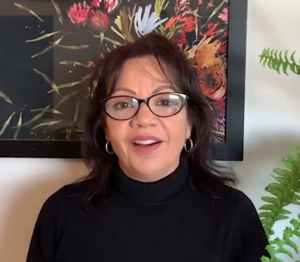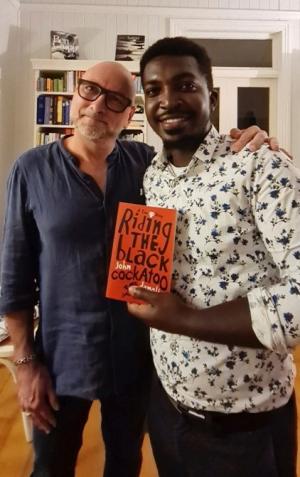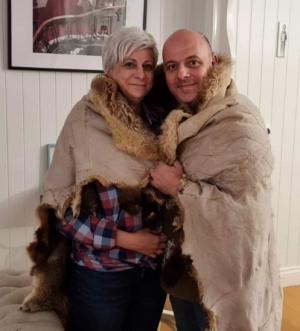IofC Australia’s trustbuilding project, Our Uluru Response, creates spaces for hearing and telling the stories of First Nations people. Through such encounters, friendships grow and joint actions are taken to right the wrongs of the past. These are three recent spaces and stories.
Starting late last year, IofC volunteers Mike and Jean Brown with John and Helen Mills in South Australia have organized monthly Zoom sessions with a circle of 30 or so friends to hear from Indigenous speakers.
On 28 October 2020, Peramangk artist and writer Mandy Brown spoke to a group of 22 people about the Stolen Generation experience. Both her mother and grandmother had been removed from their families as children, and Mandy herself was placed with a British immigrant family: the separation from family, language and culture had happened thrice over. After the government’s Bringing Them Home report came out,  she was able to get access to her adoption record—but whole sections had been blacked out. When asked why, the government officer told her it was ‘too sensitive.’ She recalled other Aboriginal children she knew, who had been told they were Greek.
she was able to get access to her adoption record—but whole sections had been blacked out. When asked why, the government officer told her it was ‘too sensitive.’ She recalled other Aboriginal children she knew, who had been told they were Greek.
Today, Mandy runs workshops with First Nations people to ‘write out their pain’ through the arts, using language, painting and crafts. Compared with the Kaurna and Ngarrindjeri people, who are teaching children their mother tongue at school, the Peramangk people have barely 50 words left of their language. Her poetry speaks of the experience of a modern-day First Nations woman, while also reflecting on the history that has robbed her people of land, culture and heritage:
On 25 February, Tim Hartman spoke to the group about the links between racism and environmental degradation. Tim, a ranger, is responsible for 28 national parks on traditional Ngarrindjeri lands in southeastern Australia, and serves as the CEO of a corporate body overseeing the management of lands under native title.
He is now working to get wider appreciation of traditional knowledge and values among mainstream agencies. Lack of water in the Murray-Darling river system is a shared challenge. His mission now is to promote Indigenous voices and promote mainstream interest in working together. Previous attempts to have a treaty on Ngarrindjeri rights and interests, he noted, are still ‘unfinished business.’
The Ngarrindjeri lands in the southeastern region of South Australia were covered by wetlands up until the 1950s. Surrounded by the River Murray, lakes and coast, the area supported a high density of Indigenous population and a nutritious, fish-rich diet.
In the 40 years leading up to the proclamation of South Australia as a British colony, the Indigenous population of Ngarrindjeri lands fell by half, due to smallpox and venereal disease brought by whalers and sealers. In modern times, Aboriginal people suffered further health impacts as their traditional lands and food sources were destroyed by agriculture and development, replaced by government rations of white flour and sugar.
Indigenous health is still 10 or more years less than the average life expectancy in Australia—and the once vast wetlands now cover less than 10% of Ngarrindjeri territory.
 On 20 March in Brisbane, Laura and Laurent Fontaine’s family hosted a group of friends to hear from John Danalis, author of Riding the Black Cockatoo. The book tells his story of returning an Aboriginal skull held by John’s family to a resting place in its community of origin.
On 20 March in Brisbane, Laura and Laurent Fontaine’s family hosted a group of friends to hear from John Danalis, author of Riding the Black Cockatoo. The book tells his story of returning an Aboriginal skull held by John’s family to a resting place in its community of origin.
John explained how this path towards reconciliation led him to initiate the Star of Taroom project—a mission to return a sacred stone, taken  by John’s father, to Yiman country. The expedition will involve a 500-km trek, during which time people will be able to walk alongside the stone and accompany the precious piece to where it belongs.
by John’s father, to Yiman country. The expedition will involve a 500-km trek, during which time people will be able to walk alongside the stone and accompany the precious piece to where it belongs.
To close the event, John shared a powerful blessing: wrapping each guest in a possum skin cloak from northern Victoria. It was gift he received and a promise he made with himself: to share and wrap as many people into the cloak, as a symbol of peace and continued reconciliation.
- In cooperation with First Nations elders, IofC Australia is co-hosting a series of large and small forums for truth telling and truth hearing about the hidden history of this land. Contact Trustbuilding Project Manager Sarah Naarden if you would like to host a small group or community forum in your local area.

